Alchemist: Is this the world’s most creative restaurant?
(Image credit: Claes Bech Poulsen)
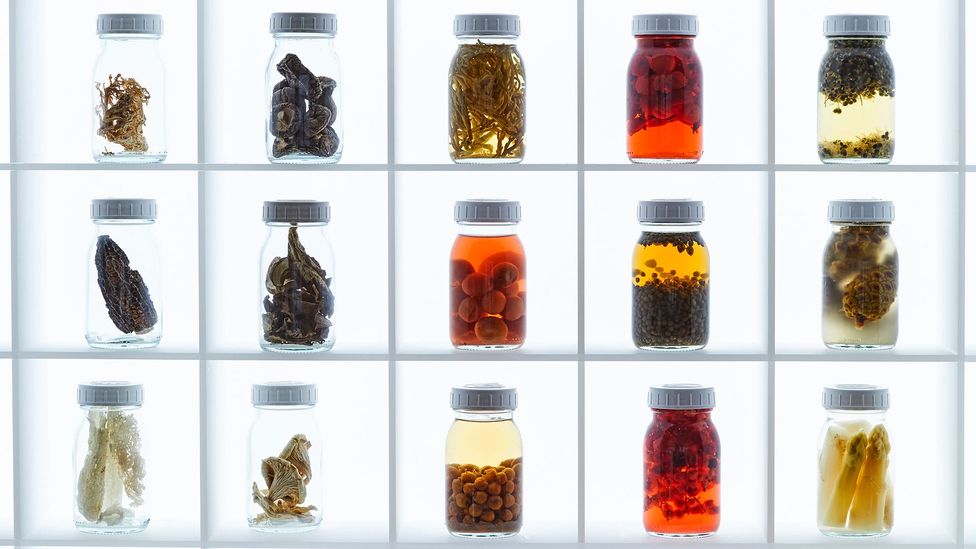
In a former theatre set building workshop, chef Rasmus Munk and his team offer Michelin-starred meals from food waste, drinks from rabbit’s ears and a new way to look at food.
F
From the moment the heavy bronze doors swing open, inviting you in from a rough, post-industrial street to a dark space filled with wonders, the experience of entering Copenhagen’s two Michelin-starred restaurant Alchemist is like falling down a rabbit hole.
In the luxurious lounge where guests are served their first few courses, a window to the kitchen-laboratory illuminates jars of ingredients on the back wall. Then you are whisked to a domed space where plastic bags dance like jellyfish in the “ocean” above you, and a further 40 or so head-spinningly strange mouthfuls of food arrive.
A buttery lobster claw that lingers on the palate. Herbs arranged in the shape of Danish fairy tale writer Hans Christian Andersen’s profile that dissolves when soup is poured over them. A wonderfully round snowball that, when you bite into it, tastes of a ripe tomato. A silicone spoon in the shape of a tongue that you have to lick to discover its gooseberry and pumpkin seed flavours. A raw Faroese sea urchin blended with foie gras to produce a texture like silk.
As a drink containing bioluminescence extracted from jellyfish is served, the lights are dimmed, allowing it to glow.
Beyond creating a surreal experience for the privileged few who can dine here – menus cost 4600 DKK (£538) per head excluding drinks, and tickets, released three months ahead, sell out in seconds – head chef Rasmus Munk has bigger fish to fry. It’s not enough for him to create a double-Michelin starred restaurant featuring on The World’s 50 Best Restaurants list; he wants to change how we think about food.
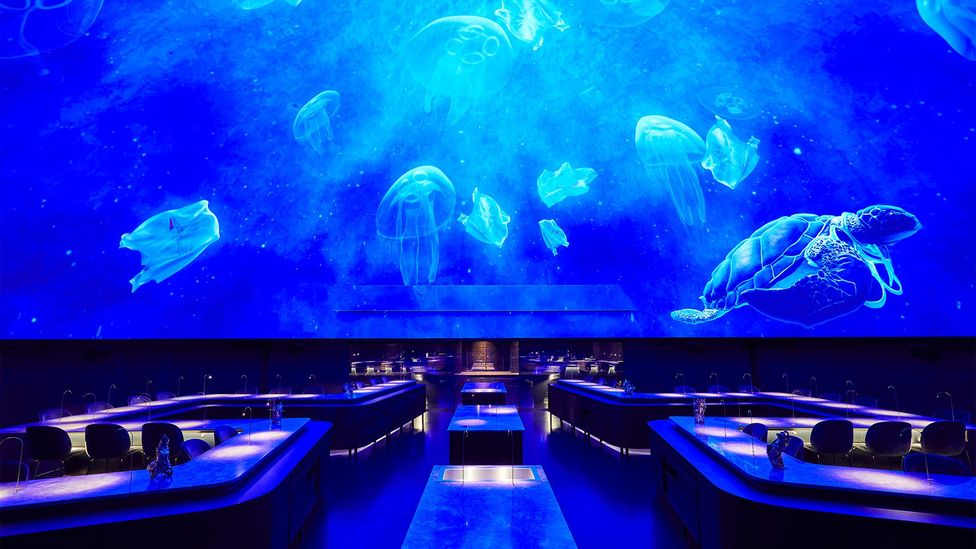
Alchemist is located in the former set building workshop of the Royal Danish Theatre (Credit: Søren Gammelmark)
“It’s about changing the world through gastronomy and using gastronomy as a platform,” he said. “We want people to be more affected by the work that we do, and we really nerd into the storytelling and the presentation to do that.”
The dishes include “hunger”, where thin silver ribs are draped with sustainable rabbit meat, making its well-heeled diners squirm in their seats as they think about starvation; a blood drop-shaped ice cream served with a QR code that links to an organ donor scheme, and a chicken foot presented in a cage the exact proportions of a factory-farmed chicken’s cage, while the domed ceiling fills with a video of metal cages clanging down on top of each other.
Other dishes touch on sustainability and biodiversity: the Faroese sea urchin is an invasive species that strips underwater vegetation making eating them an act of environmental protection; a nettle butterfly dish was developed after the research team realised the potential of farming the protein-rich insects. It’s more than theatre: since 2020, nearly 13,000 guests have used the organ donation QR code (without access to the end websites, the restaurant can’t assess how many have actually signed up).
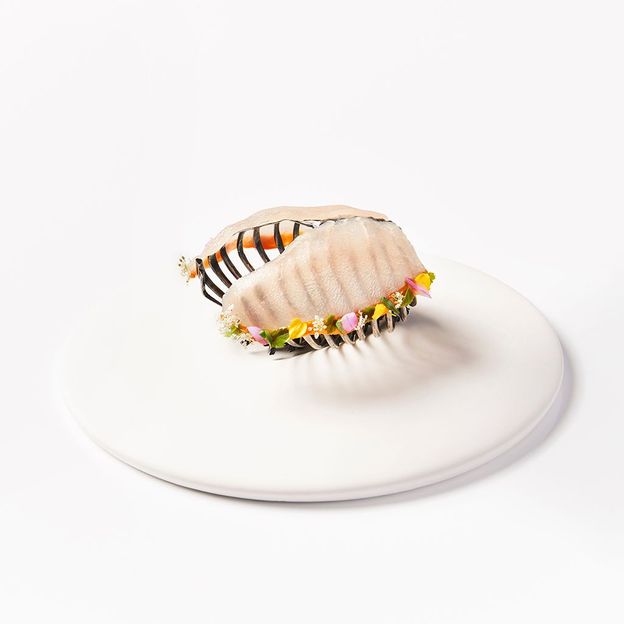
“Hunger”, thin silver ribs draped with sustainable rabbit meat (Credit: Claes Bech Poulsen)
The genesis of the idea of a fine dining restaurant that goes far beyond the classic constellation of white tablecloths, waiters, diners and chefs began when Rasmus was a chef in Jutland. His culinary career took him on a more conventional route until a volunteering project gave him an epiphany.
“I got a buzz from making Christmas dinner for a group of disadvantaged kids one year,” he said. “It made me think: there’s more to food than cooking something that tastes great.”
He set up his first Alchemist restaurant in a different location in Copenhagen in 2015, fast establishing himself as a chef who thinks outside the box by serving dishes including an edible ash tray dish inspired by lung cancer. While other regional chefs at this level were following the established New Nordic pattern, he wanted to include art, science and society in an approach he calls “Holistic Cuisine”, encompassing everything from how you treat your staff and suppliers to how you design a restaurant.
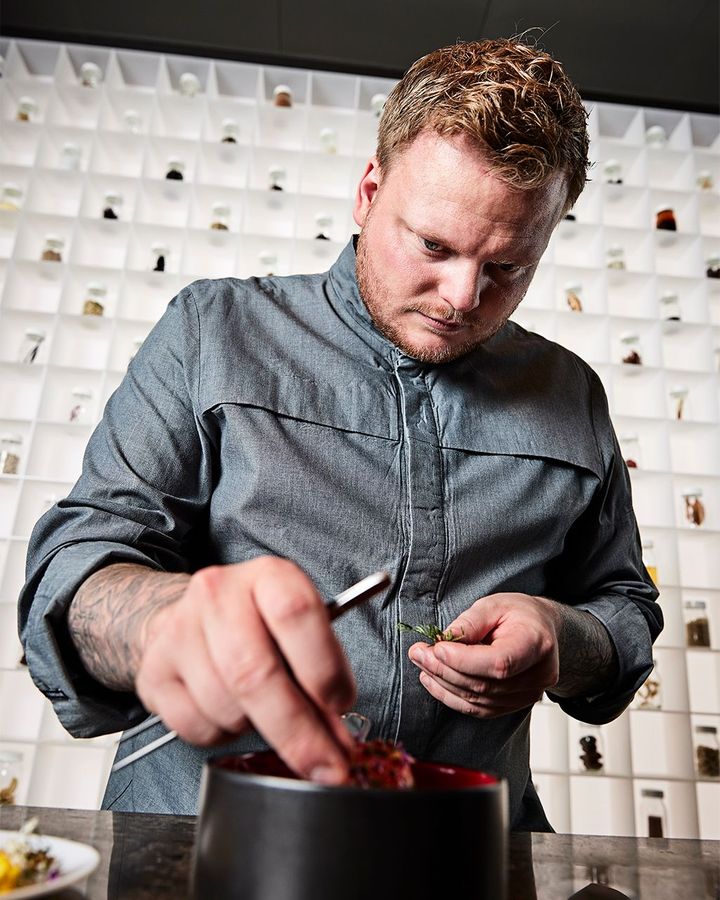
Chef Rasmus Munk wants to change how we think about food (Credit: Søren Gammelmark)
That means his staff work a 48-hour week, unheard of in the fine dining business, with weekends off and a four-day work week; they also get a pension plan and healthcare. On the payroll alongside chefs, the restaurant has a composer, performance artists and 3D animators; completing the holistic approach, diners are greeted by actors and dancers and leave via a ball pit.
Rasmus’ creative thinking attracted the attention of billionaire financier Lars Seier Christensen, allowing him to open his current restaurant in 2019 in the former set building workshop of the Royal Danish Theatre. It was awarded two Michelin stars seven months later. When legendary Spanish chef Ferran Adrià visited, he described it as one of the most memorable meals he has had in the last 10 years.
A precision focus combined with an open mind fuels this thinking. Beyond the main kitchen, where 24 chefs scrape chicken feet, prepare plump miniature bao buns and ready the restaurant for evening service, the research team, led by Diego Prado, develops new ingredients and experimental foods of the future.
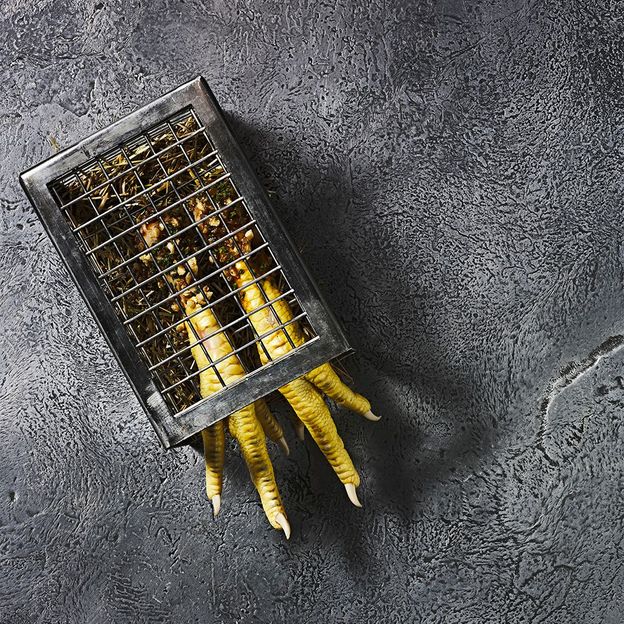
“Burnout Chicken”, a chicken foot presented in a cage (Credit: Søren Gammelmark)
“We make the building blocks in order for the test kitchen to make interesting and new dishes,” Diego said. “And that means finding new ingredients, new techniques and making it all possible for the test kitchen.”
Recently that has meant refining silkworm silk to create a protein that can be spun into a light meringue, persuading silkworm farmers to collect silkworm frass (excrement) to be brewed into tea, making yoghurt with ants, and running tests on butterflies to understand how seasonality affects their flavour.
Beside Diego, PhD researcher Nabila Rodriguez Valerón is working on a project to take the bitterness out of vegetables, inspired by the Japanese taste-sensation of kokumi.

Kombucha flower on Alchemist’s taste wall (Credit: Søren Gammelmark)
“It’s super interesting to develop different products and foods like this,” she said. “I think this is a good tool to drive a healthy diet, especially for kids, as a way to introduce vegetables into their diets. Because nobody really like steamed broccoli, do they?”
Other collaborations with researchers at the Technical University of Denmark (DTU) focus on developing sustainable food from seaweed and fungi, breaking down different kinds of materials to create something new.
“We have been pushing the boundaries of what people can eat a lot. These things might end up in a dish, but it’s not the goal,” said Diego. “And right now, we are also working more and more with projects that are not really related to the restaurant.”
One of these projects has been a collaboration with a researcher at MIT’s Media Lab about space food, where teams have been experimenting with moon soil, and sending miso into space to test fermentation as a possible process to help feed future space-dwellers.
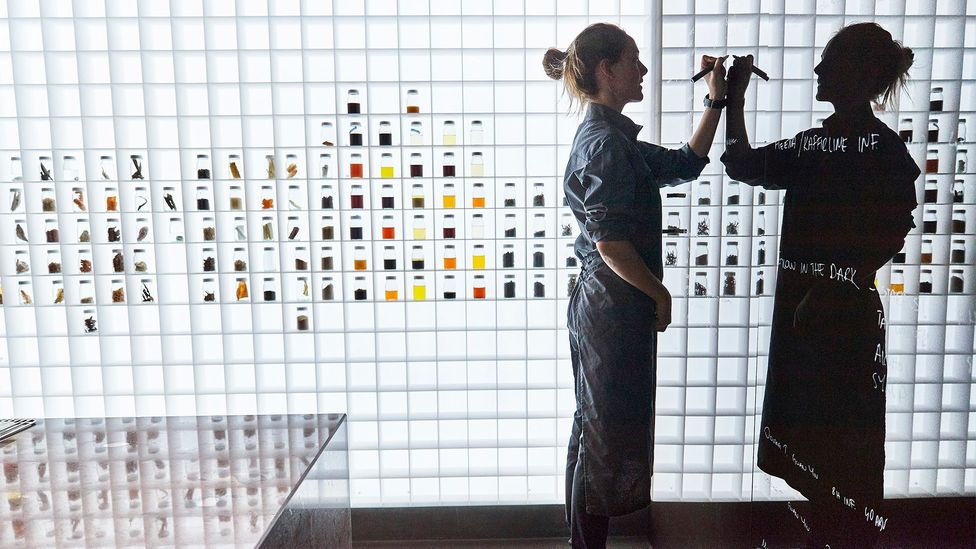
Alchemist’s research team develops new ingredients and experimental foods of the future (Credit: Claes Bech Poulsen)
Diego also speaks to suppliers and farmers about the parts of their produce that they don’t use and don’t sell, in a bid to create food from what is otherwise destined to be waste. The approach has resulted in plenty of dishes to date, and a cocktail named the “Fur Martini” with ingredients including rabbit ears.
Perhaps the most exciting thing to come out of the kitchen is not on a plate at all, but the use of its knowledge and holistic approach to food to help society. During the pandemic, Rasmus used Alchemist’s kitchens to feed Copenhagen’s homeless through his JunkFood non-profit organisation. Alchemist has also collaborated with the children’s ward of the local Rigshospitalet hospital, helping children on the cancer ward.
The restaurant created an app to help them choose food, introduced new food technology into the hospital kitchen, and created a protein-rich ice cream for children recovering from cancer, when that is all they want to eat. They are currently contributing to the future experience of Mary Elizabeth’s Hospital as specialist advisors where, subject to funding, a pilot project will work towards creating world-class hospital food.

In Alchemist’s main kitchen, chefs prep dishes for evening service (Credit: Søren Gammelmark)
As Emilie Vagner, anthropologist and project manager on the user experience team at Mary Elizabeth’s explains, Rasmus’ unique holistic approach to food is what makes it work.
“That’s why we wanted to work with him: it’s not just about taste and food, but about surroundings too. We have children here with no appetite so getting them motivated to eat is important. His holistic approach understands that.”
“We believe it will change everything: there are so many knock-on effects,” said Rasmus. “Less medicine, less time on the ward, and more happiness, of course, too. And then after five years, we can go out with results and hopefully spread it out with more hospitals in Denmark and maybe the world.
“It’s about creating impact beyond the plate. For me, I’m thinking: what is the next step for us to really make an impact? That’s what we’ll do next.”
BBC.com’s World’s Table “smashes the kitchen ceiling” by changing the way the world thinks about food, through the past, present and future.
—
Join more than three million BBC Travel fans by liking us on Facebook, or follow us on Twitter and Instagram.
If you liked this story, sign up for the weekly bbc.com features newsletter called “The Essential List”. A handpicked selection of stories from BBC Future, Culture, Worklife and Travel, delivered to your inbox every Friday.




More Stories
Top 5 Cafe around Sudirman Worth a Visit
KC named one of the best places in America to travel
At Urban Hawker in New York, Singapore street food gets a new HQ